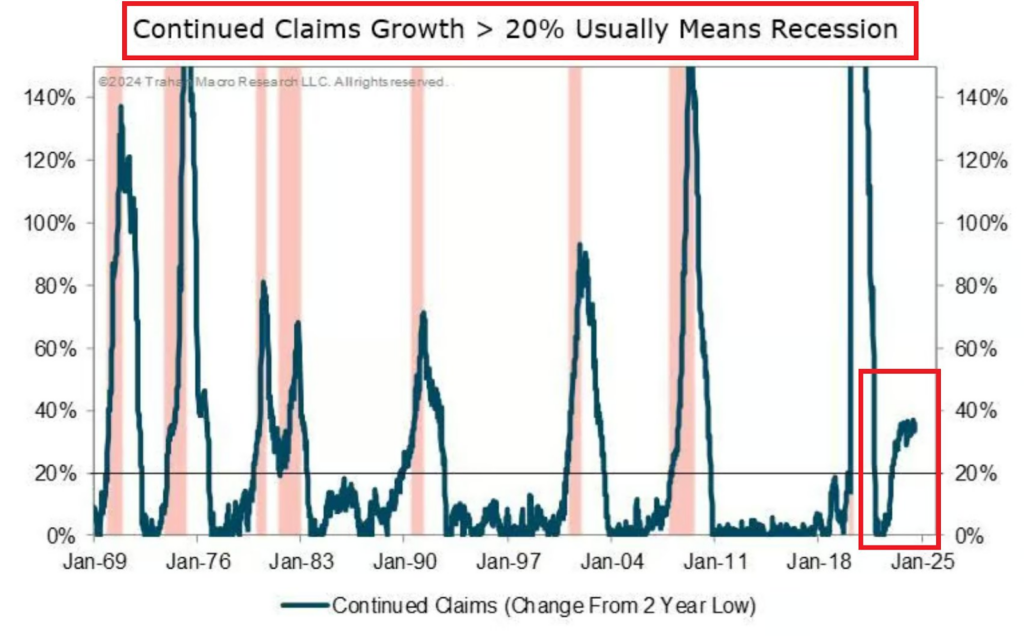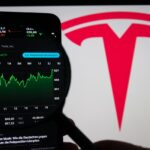The United States economy is once again facing another signal pointing towards the possibility of an imminent slowdown amid prevailing uncertainty.
Notably, the latest concern has emanated from trends related to rising unemployment claims. Insights shared by Global Markets Investor in an X post on July 23 indicated that continued jobless claims have spiked by more than 30% over the last two years.
This is the highest increase since the COVID-19 crisis, raising significant concerns about the country’s economic health.
According to the analysis, historically, when continued claims for unemployment benefits rise more than 20% from their lows, a recession typically follows. The data, spanning over five decades, shows a consistent pattern: each significant increase in continued claims has been a precursor to an economic downturn.
“The number of people receiving unemployment benefits spiked by >30% over the last 2 years, highest increase since the COVID Crisis.In the past, every time when US continued jobless claims rose more than 20% from their lows, a recession followed,” the platform noted.

This pattern suggests that the US could be on the brink of another recession. The increase in unemployment benefits is not just a statistical anomaly; it reflects underlying economic distress. Companies may cut back on hiring or laying off workers, and consumer confidence might weaken, leading to reduced spending and investment.
Concerns over imminent slowdown
The timing of this surge in unemployment benefits is particularly concerning. As the US economy grapples with inflationary pressures, higher interest rates, and global economic uncertainties, the increase in jobless claims adds another layer of risk.
It’s worth noting that although several indicators have pointed to a possible recession, the labor market has emerged as a key area of concern. For instance, as reported by Finbold, the US economy might not be as strong as thought, considering that the Bureau of Labor Statistics (BLS) revised job growth figures downward for four of the first five months of 2024.
The revisions suggest that the labor market may not be as robust as initially portrayed, which could affect economic policy and investment decisions.
Additionally, concerns around rising initial jobless claims, declining perception of job availability, an inverted yield curve, and the disconnect between the economy and financial markets all signal worrying times ahead.
Meanwhile, the focus is on when a possible recession will hit, with a section of analysts maintaining that the downturn might occur in the second half of 2024.








